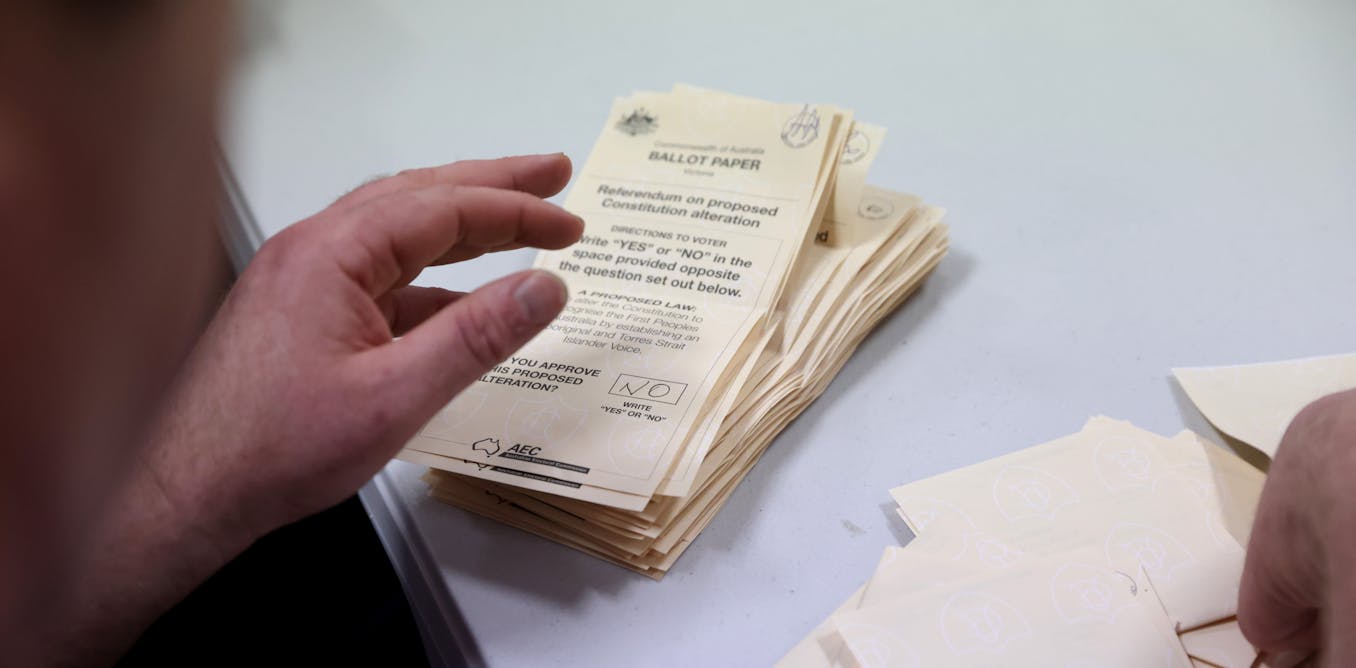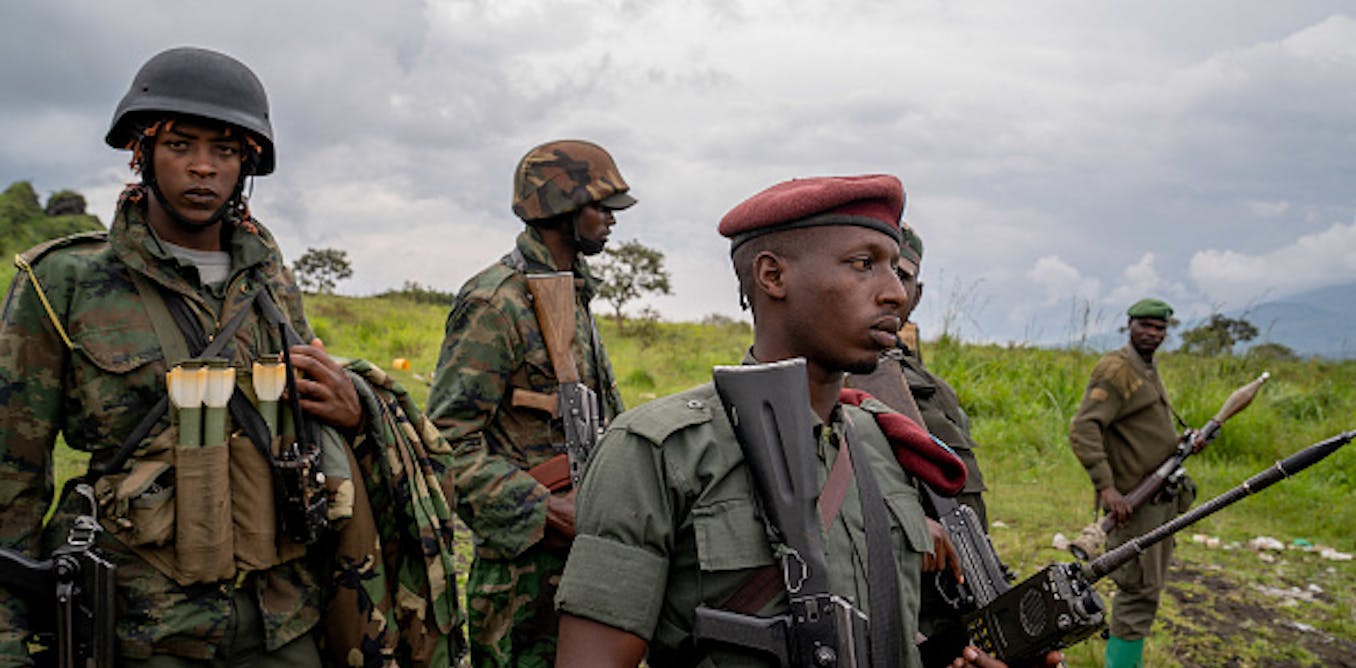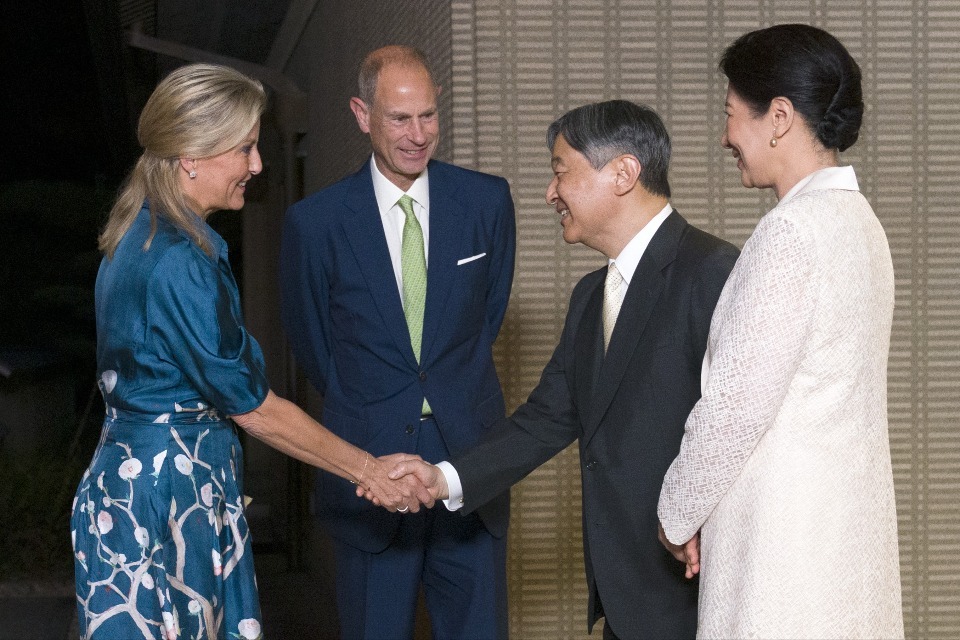There has never been a decade without a significant Indigenous-led movement in Australia. These movements have centred on the reinstatement of Indigenous peoples’ rights as self-determining peoples, and demands for justice arising from our brutal dispossession and its contemporary fingerprints.
There has never been a successful referendum without bipartisan support. Success for the Voice to Parliament was always going to be against the odds. Tonight, we saw results track recent polls with an overall Yes vote expected in the mid 40s nationally. With New South Wales, Tasmania and South Australia called by 7:25pm, the referendum has failed.
On May 27, 2017, more than 250 community delegates from across the continent stood together and provided an invitation to the Australian people through the Uluṟu Statement from the Heart.
The statement proposed a path forward for the nation: Voice, Treaty and Truth. Today, Australia voted on the first step and in delivering a No outcome, has revealed the heart of this nation.
Let’s acknowledge the significance of the work it took to get here.
The journey here
Megan Davis and George Williams’ Everything You Need to Know About the Uluṟu Statement from the Heart, offers a heartbreaking timeline of the many forms of political claim-making First Nations’ people have engaged in since at least 1846.
These include petitions to kings and queens, petitions to governors requesting land grants, demands for freedom, for autonomy over reserve areas, to demands for representation in the parliament, labour strikes, and calls for treaty and land rights.
In the 13 years since the 2010 Expert Panel on Constitutional Recognition, there have been seven separate processes and ten reports. In the middle of these, the sixth report was the Final Report of the Referendum Council, shortly after the delivery of the Uluṟu Statement from the Heart.
The Final Report’s recommendations focused on constitutional recognition in the form of a Voice to Parliament, because this was the most strongly endorsed option from the five options considered by the 12 regional deliberative dialogues. The Uluṟu Statement from the Heart also called for Treaty, the second most strongly endorsed form of recognition, and for Truth, out of respect for the truth-telling that was given at each and every dialogue.
Where it all went wrong
Years of bipartisan support was maintained right until the early months of this year. By February it was becoming clear Opposition Leader Peter Dutton would be unlikely to support the Voice to Parliament referendum.
In doing this, Dutton actively ignored the advice of those around him in the Liberal party. By April 5, 2023, it was announced Australia would head to its 45th referendum without bipartisan support for the proposal, knowing no referendum had ever succeeded without it.
In August 2023, the Australian Financial Review’s Phillip Coorey reported a leaked text message from a coalition MP:
We can’t win the election unless we defeat the Voice solidly. i.e. we need to defeat it to get to the election starting line.
The opposition made their bet: defeat the Voice and give themselves a chance at the next federal election.
This transformed a people-driven proposal into a partisan political debate. It has made for a campaign characterised by lies, misinformation, disinformation, and outright conspiracies circulated on social media platforms. This sometimes occurred with complicit mainstream media that have either failed to fact-check basic claims or given misinformation equal weight in their presentation of “both sides”.
The “no” campaign’s decision to position two prominent Aboriginal faces as their spokespeople enabled a doubly effective claim to division: arguing the Voice would create racial division between Indigenous and non-Indigenous peoples, and that Indigenous people also couldn’t agree.
The small levels of disagreement within Aboriginal and Torres Strait Islander community were, so often, treated as media spectacle and not treated with the seriousness our diverse political views deserve, in the context of so much shared experience.
What now?
We have heard numerous thought bubbles along the way about what happens next, if not a Voice. These have included Dutton’s suggestion of a second referendum on symbolic recognition. This proposal will not have any support from First Nations’ people, and there’s likely to be little appetite from the wider Australian population. That lack of support also no doubt informs the prime minister’s decision not to pursue a legislated Voice.
Senator Lidia Thorpe is likely to call for truth-telling and Treaty making, though those involved in the Victorian processes have thrown their weight behind the necessity of the Voice to give strongest effect to treaty and truth. Whatever comes next, we now know it will happen without a protected representative connection between community and the Commonwealth parliament.
There will no doubt be a lot of commentary and analysis about the relative successes and failures of the “no” and “yes” campaigns, their strategy, and their arguments over future weeks and months. For most Aboriginal peoples and Torres Strait Islanders, however, this will be of little interest or use.
The political subjugation and further marginalisation of First Nations’ peoples is no longer historical legacy but a contemporary decision reinscribing centuries of paternalism: that we are not peoples deserving of a protected right to be heard on matters that affect us.
We asked for change. We asked to be heard. We asked the Australian people to walk with us.
And so now we are where we have always been, left to build our better futures on our own.




